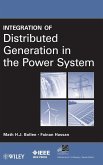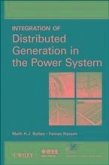
Gebundenes Buch
1. Auflage
9. August 2011
Wiley & Sons
| eBook, ePUB | 141,99 € | |
| eBook, PDF | 141,99 € |

eBook, PDF
4. August 2011
John Wiley & Sons
eBook, ePUB
4. August 2011
John Wiley & Sons
Ähnliche Artikel


Gebundenes Buch
1. Auflage
21. Februar 2011
Wiley & Sons


Gebundenes Buch
1. Auflage
1. September 2007
Wiley & Sons


Gebundenes Buch
Solar Power as an Energy Source
1. Auflage
7. Oktober 2013
Wiley & Sons

Gebundenes Buch
Design, Evaluation, Aging, Testing, and Repair
2. Aufl.
21. Juli 2014
Wiley & Sons
Ähnlichkeitssuche: Fact®Finder von OMIKRON
